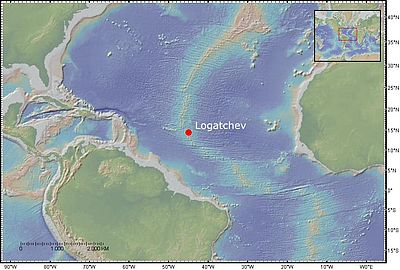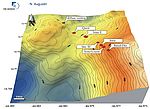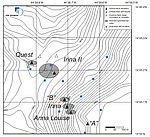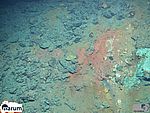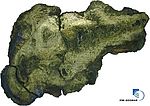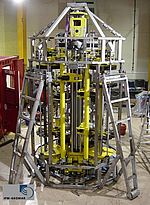The third dimension of the ultramafic-hosted Logatchev hydrothermal field: Genesis, evolution, and pathways in the subseafloor
The overarching target of the project is the understanding of the three-dimensional spatial extent and the subseafloor variability of an ultramafic-hosted hydrothermal field. We used the video-guided mobile drilling platform Rockdrill 2 of the British Geological Survey in order to take drill cores (up to 15 m deep) from mineralized subseafloor rocks and massive sulfides from the Logatchev hydrothermal field at 14°45‘N on the Mid-Atlantic Ridge. Geochemical, mineralogical, and isotope studies of hydrothermal precipitates and mineralised rocks will help to understand the following scientific questions:
1. What are the vertical extent and the 3D-zonations of within the mineralization?
2. What causes the formation of the unusual „Smoking Craters“ compared to normal chimney structures?
3. What are the major mixing and coolong processes in the shallow subseafloor and how do they impact on the fluid chemistry and the associated faunal communities ? (in co-operation with other working groups)
4. Do episodic hydrothermal activity and remobilisation processes effect the overall metal budget or the element distribution with the hydrothermal field?
Contact: Dr. Sven Petersen
Principle investigators: Dr. Thomas Kuhn / Dr. Sven Petersen
Funding Period: 2006-2009
Funding Source: DFG
Co-operation: GEOMAR (Dr. C. Devey, Dr. K. Lackschewitz, Dr. J. Imhoff), Institut für Geowissenschaften der Universität Kiel (Dr. J. Scholten, Dr. D. Garbe-Schönberg), British Geological Survey (Dr. A. Skinner), University of Ottawa (Dr. M.D. Hannington, Dr. T. Monecke), Czech Geological Survey (Dr. J. Pasava, Dr. A. Vymazalova), International University Bremen (Dr. A. Koschinsky), University of Münster (Dr. H. Strauss), VNIIOkeangeologia, St. Petersburg, Russia (Dr. G. Cherkashov), SIOSOA, Hangzhou, China (Dr. X. Han)


